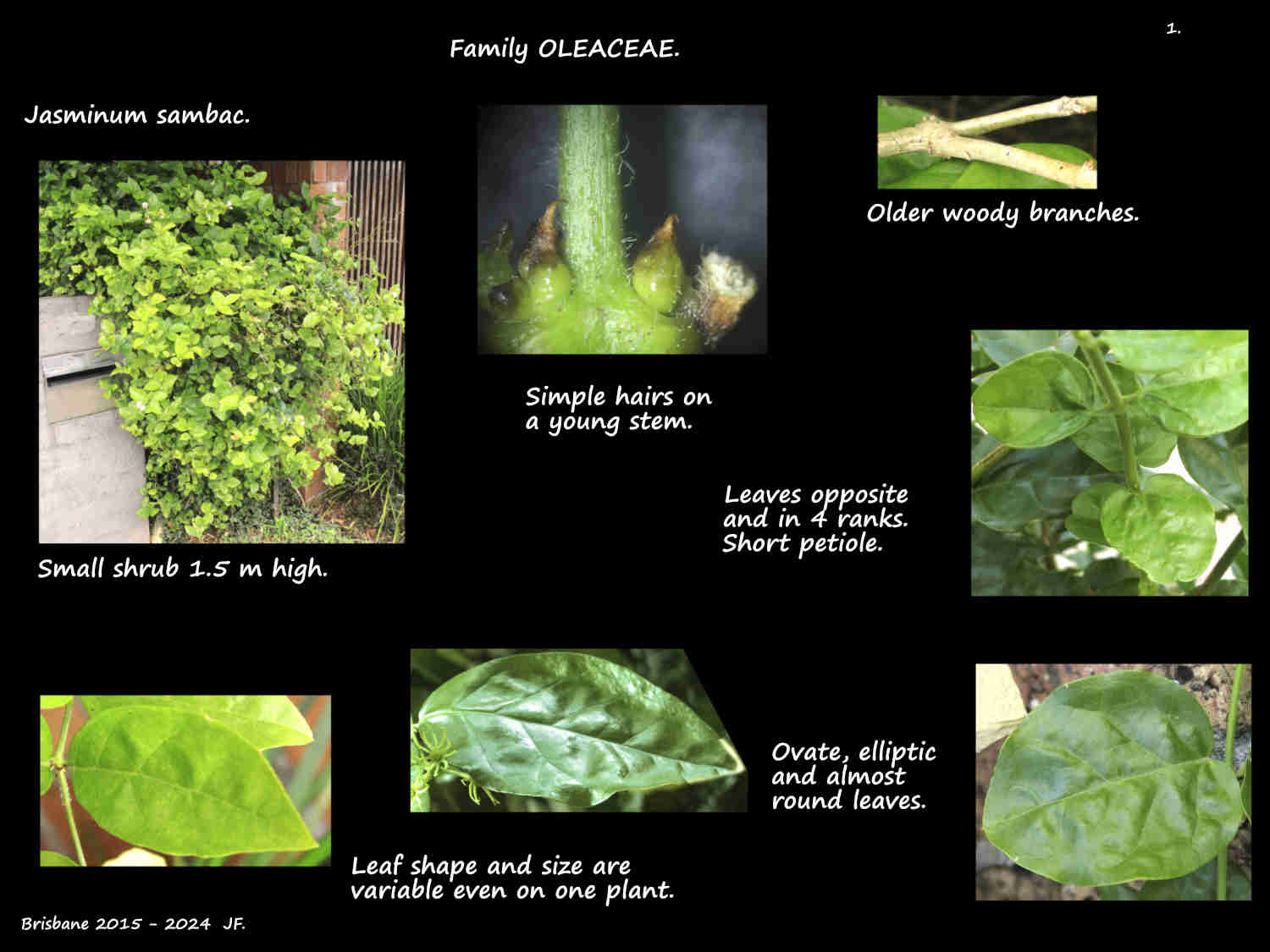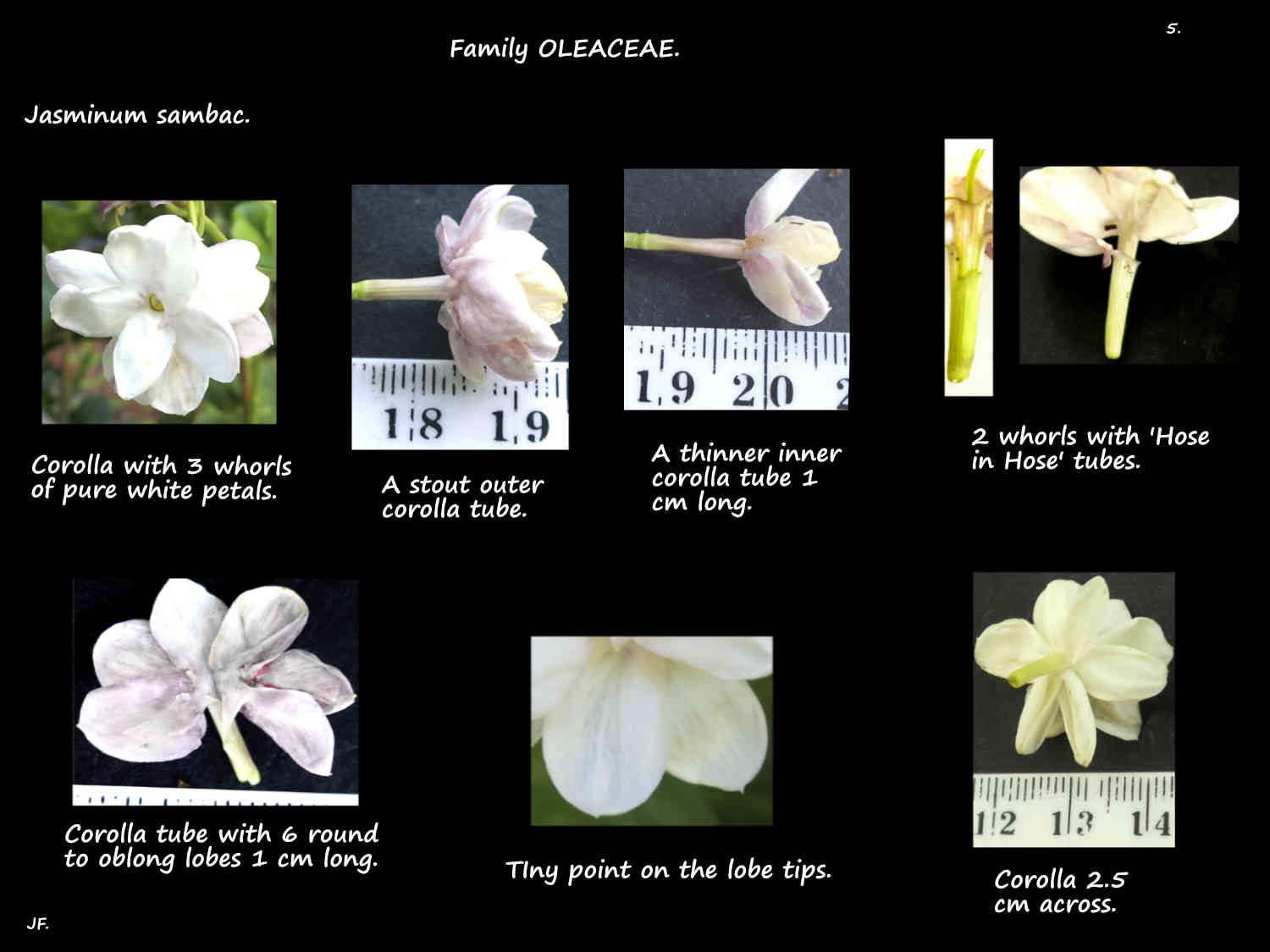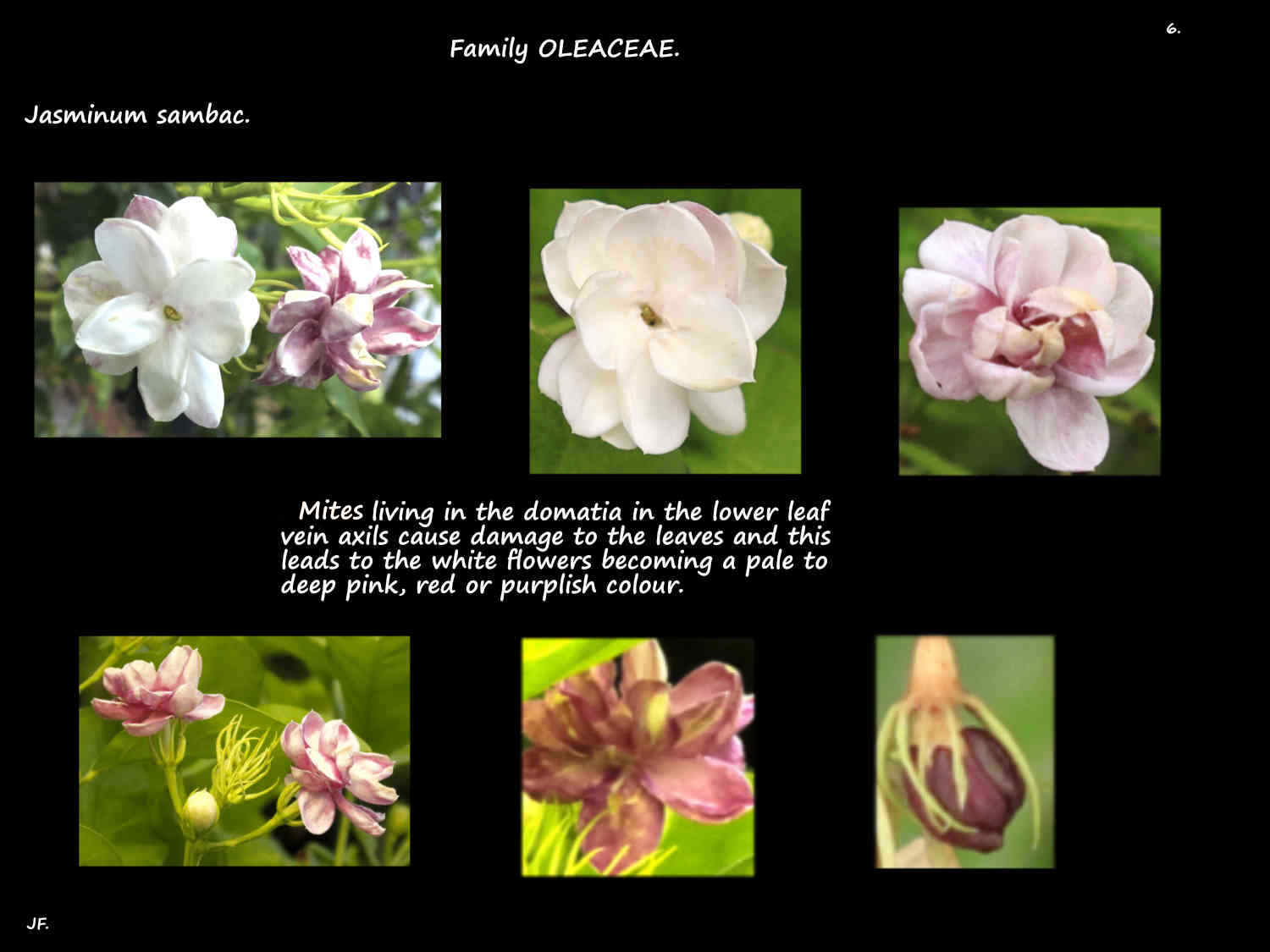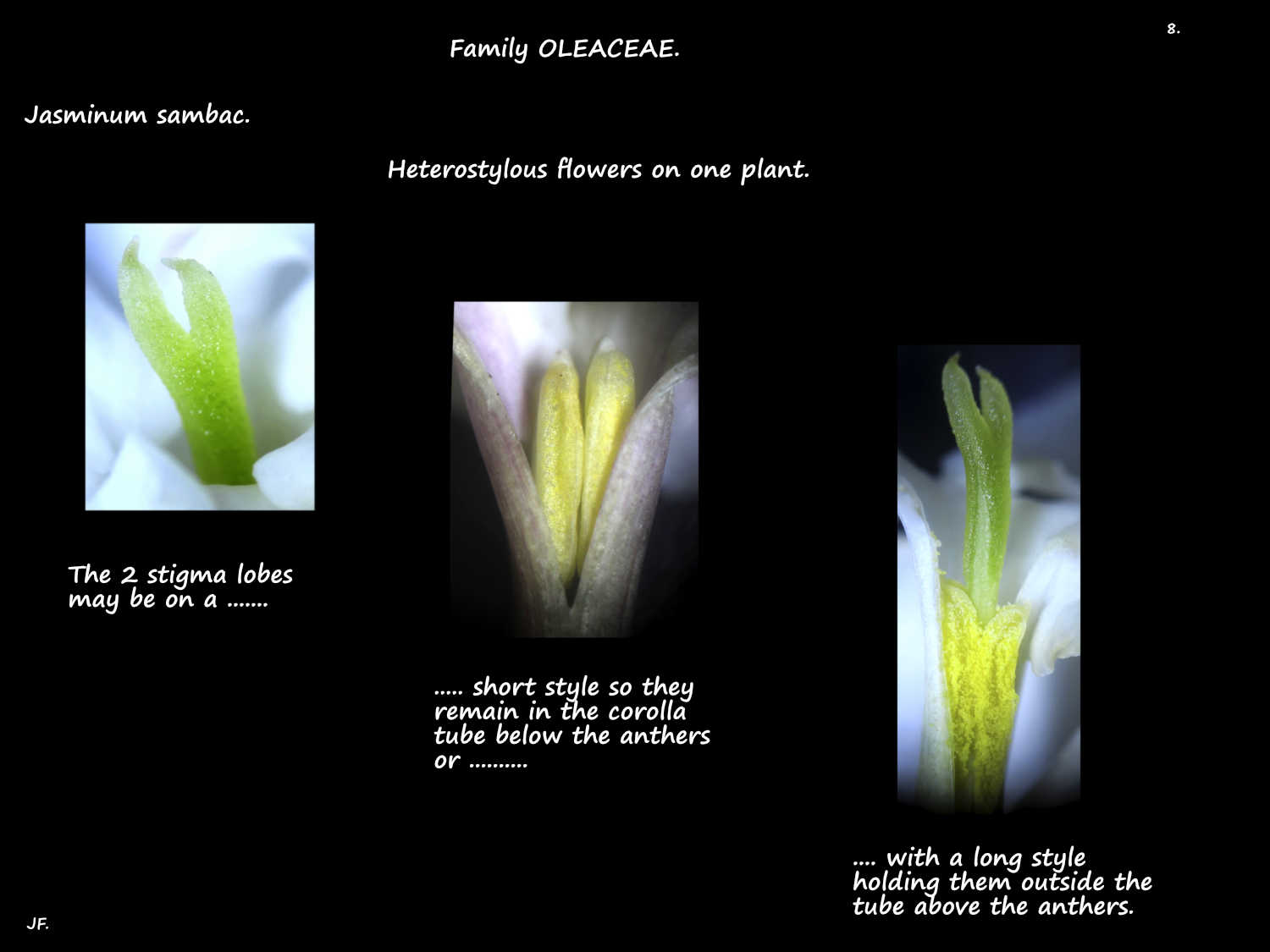Jasminum sambac.
Arabian jasmine, native from India to S.E. Asia is a commonly cultivated species.
Its features are variable, even on one plant and over the years it has collected 32 synonyms.
They are typically seen as a small shrub up to 3 m high.
With support the branches will scramble over other vegetation becoming a woody climber.
Twigs, with a few hairs are round in cross section or slightly 4 angled.
The simple opposite leaves are on a hairy petiole from 2 to 6 mm long.
Blades, from 4 to 12 cm long by 2 to 7 cm wide can be round, ovate or elliptic.
The tips can be round or pointed sometimes with both types on the same shrub.
The 4 to 6 pinnate veins are depressed on the upper surface and prominent below.
The lower surface has domatia which are tufts of hairs over small pits in the axils along the midvein.
Terminal inflorescences are a small cluster of typically 3 (1 to 5 or more) flowers.
The inflorescence peduncles have bracts and the 3 to 20 mm long flower pedicels have bracteoles.
These are linear, under 1 cm long and may be smooth or hairy.
The calyx has 5 to 9 (12) linear green lobes up to 1 cm long.
There are usually a few simple hairs on the edges or outer surface.
Sepals remain around the developing fruit.
The corolla may be a single whorl but usually there are 2 or occasionally 3 whorls of petals.
In each whorl the petal bases form a tube up to 1.5 cm long.
The 5 to 9 spreading oblong lobes on the rim are usually longer than the tube.
The white corollas can be up to 3 cm across.
The 2 stamens, on short filaments insert onto the corolla tube.
Basifixed anthers opening inwards through longitudinal slits remain in the tube.
The superior ovary, of 2 fused carpels has 2 locules each with 2 ovules (one may abort).
The style, with 2 linear stigma lobes arises from a notch in the top of the ovary.
The species is heterostylous with flowers having either a short style with the stigmas remaining in the corolla tube or a long one holding them above the corolla.
Fruit are a purple then black berry up to 1 cm long deeply divided into 2 sections each with 1 seed.
Commonly 1 section aborts leaving a 5 mm spherical berry with 1 black seed.
The sepal lobes remain around the developing fruit.
***************************
Cultivars.
There are a number of cultivars that are mostly reproduced asexually.
‘Maid of Orleans’ is a compact bushy shrub with flowers having a corolla with a single whorl of round or oval white petal lobes on a tubular base.
‘Belle of India’ typically have a double corolla but they may be single or semi-doubles and the petal lobes are longer.
‘Grand Duke of Tuscany’ is a taller shrub with larger flowers that usually have 3 whorls in the corolla but some flowers may have only two.
Flowers vary in size and shape on the same plant.
J.F.










